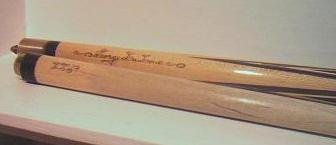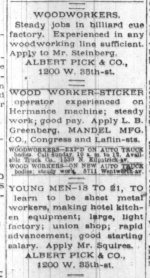Now to the rest of the American paper trail. The first thing I’m worried about is the data gap between his arrival in 1880 and his marriage in Chicago 1886. He’s not in the 1880’s census. Why? The census was in June, he arrived in May. I know that in a U.S. Census you count every single person.
How could he slip through the net?
Its not as hard as you might think.
First, consider that his name may have been mispelled or recorded as something altogether different. It happened quite frequently, unfortunately.
I even have a great great grandfather that was recorded as a girl when he was a child.
The problem is, the field agent that went walking from door to door would bring his copy of the census back to the courthouse, where at least two other copies were made, by hand. This hand-written transcription process lead to untold numbers of errors, primarily because of sloppy handwriting.
Then again, it was also common for immigrants to dodge policemen, courts, tax collectors, census takers etc for fear of being harrased.
(1920 census says he arrived in 1880, but was not a "citizen" until 1888, perhaps he avoided "official duties" until he was a citizen?)
Last but not least was the housing issue, and finding "every person" to document. In overcrowded "apartment" type buildings, or in transient homes (flop houses) and in hotels in particular, it is not unusual to find that the census taker missed people.
The 1890 census is lost so no help there.
I can’t find him in the 1900 Census.

In the 1910 Census, his name is Axel F. Hjordt and he lives together with one son, Magnus, in Chicago.
The 1920 Census mentioned in an earlier post. The 1930 Census there’s one Axel F. Hjort in Chicago and one Axel F. Hjort in Maryland… The one I Maryland has the occupation ‘inventor’…
In The U.S. Naturalization Record Indexes, 1791-1992 I found one Axel F. Hjort. His naturalization was on October 11 1888 in Cook County. There’s no information about his immigration year or his age. His ‘Country of birth or allegiance’ is Sweden Norway. This is correct, because Sweden and Norway was a union at that time.
According to the 1888 Voter List, he had lived one year in The Precinct, eight years in The County and eight years in The State of Illinois. The information about his naturalization is the same as above. He shows up again in the 1892 Chicago Voter List.
Here, he had lived four years in The Precinct, four years in The County and eleven years in The State of Illinois. He became a naturalized citizen in 1888 in Bureau County IL… He has the same address as in 1888…
I think the above information is key. I'm willing to bet that he intially went to Minneapolis as his departure info stated, but then over a few years time worked his way back east to chicago.
The next source of information is the Chicago Directory. Is this a reliable source?
Just as good, if not better than a census.
I checked the 1885 Chicago Directory and he wasn’t in it.
perhaps he still would have been west of Chicago ^?
In 1900 version of the directory, his name is Axel Hjort and he is a laborer at the same address in the 1889 version. In the one from 1910, he’s gone.
In the 1923 Chicago Directory there’s one Axel F. Hjort listed, this time as a cue maker…
I noted something in the patent applications. Axel F. Hjort didn’t write his signature by himself… This is corresponding with what I know from the ‘household examination records’. In this type of record, among other things, the Minister graded people’s ability to read. My Axel F.’s grade was ‘försvarligt’ – just passable.
Some questions to finish this. Was Herman Rambow a German immigrant?
He was born in Germany roughly a year before his parents came to the U.S.
Is there any information about the other Swede Charles Lindquist like his age? His name is popular in Chicago I noticed…
yeah his name is popular everywhere lol...so he is a bit of a mystery.
i want you to try something, and tell me what you think...
look up Axel Hjort the 1920 census and check out the one that lived in Muskegon, Michigan.
....look at the names of the people he lives with -and where they work....
you'll find a few surprises
.
/Beastesse




